Abstract
In view of the many discordant findings in previous studies regarding the genetics of prelingual deafness, family data (133 nuclear families and 25 pedigrees) were gathered from India. Analysis of these data has revealed that the defect is primarily genetic, which is in agreement with earlier findings. Segregation analysis was performed to compare various autosomal diallelic one-locus and multilocus models. Our analysis revealed that the most parsimonious model for prelingual deafness is that it is controlled by recessive genes at a pair of unlinked diallelic autosomal loci. Individuals are affected if and only if they are recessive homozygous at both loci. The likelihood of the present data under this two-locus multiple recessive homozygosis model is at least 10(8) times higher than that of the one-locus models that were examined in previous studies. This model is also the best-fitting model among other plausible two-locus models.
Full text
PDF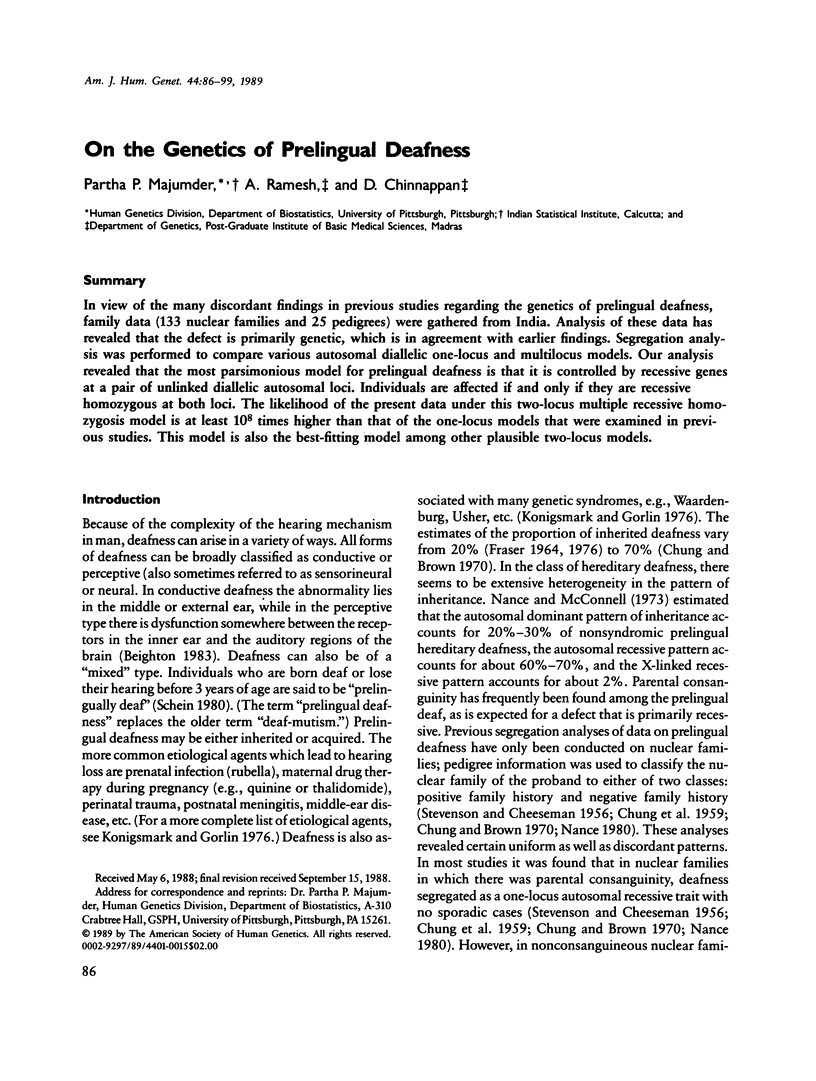
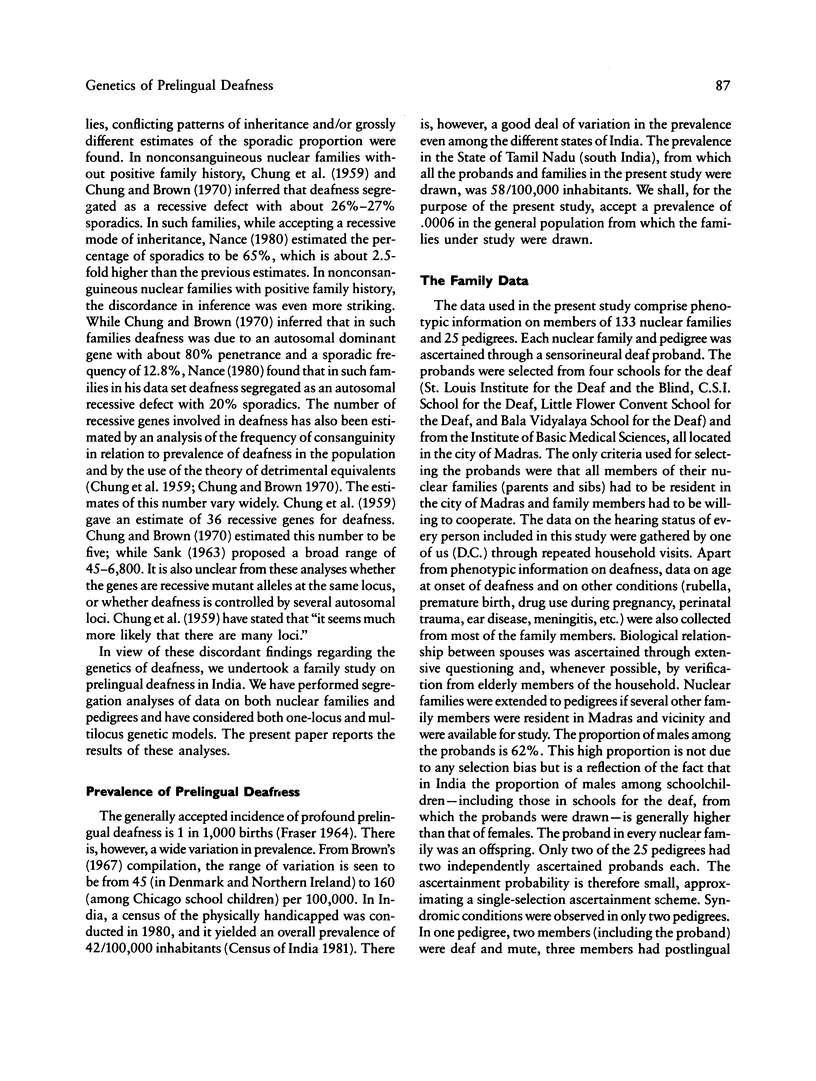
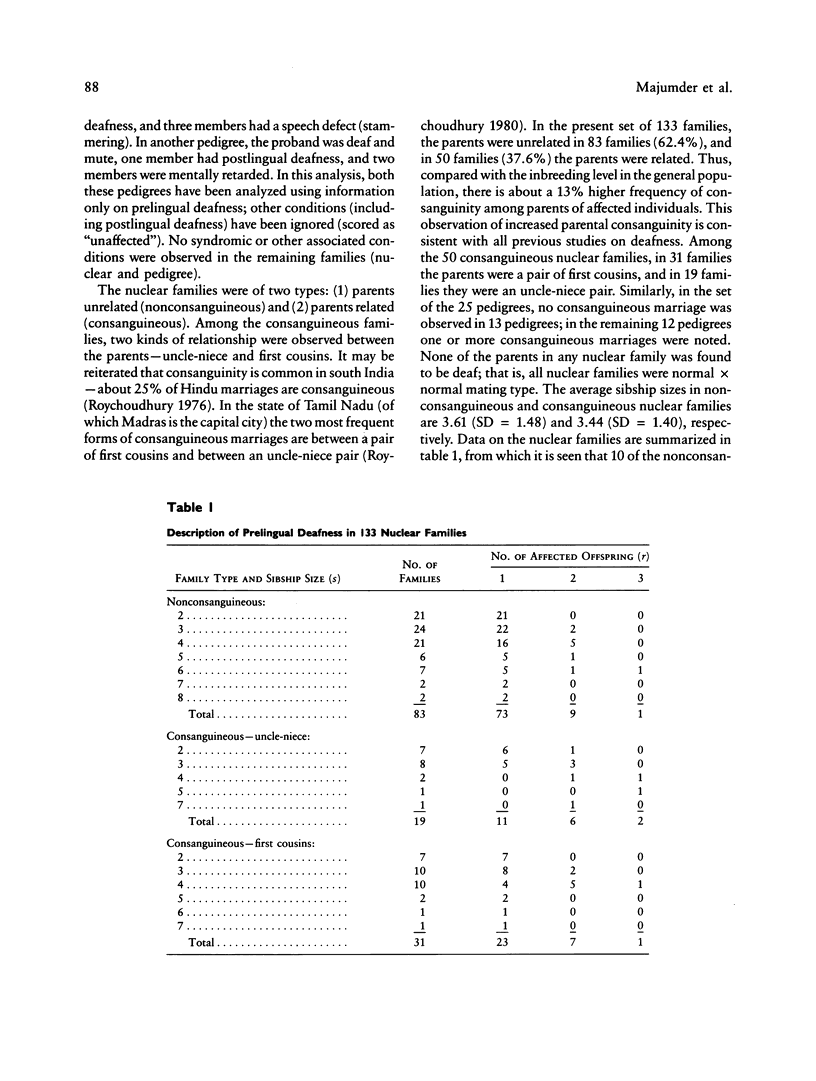
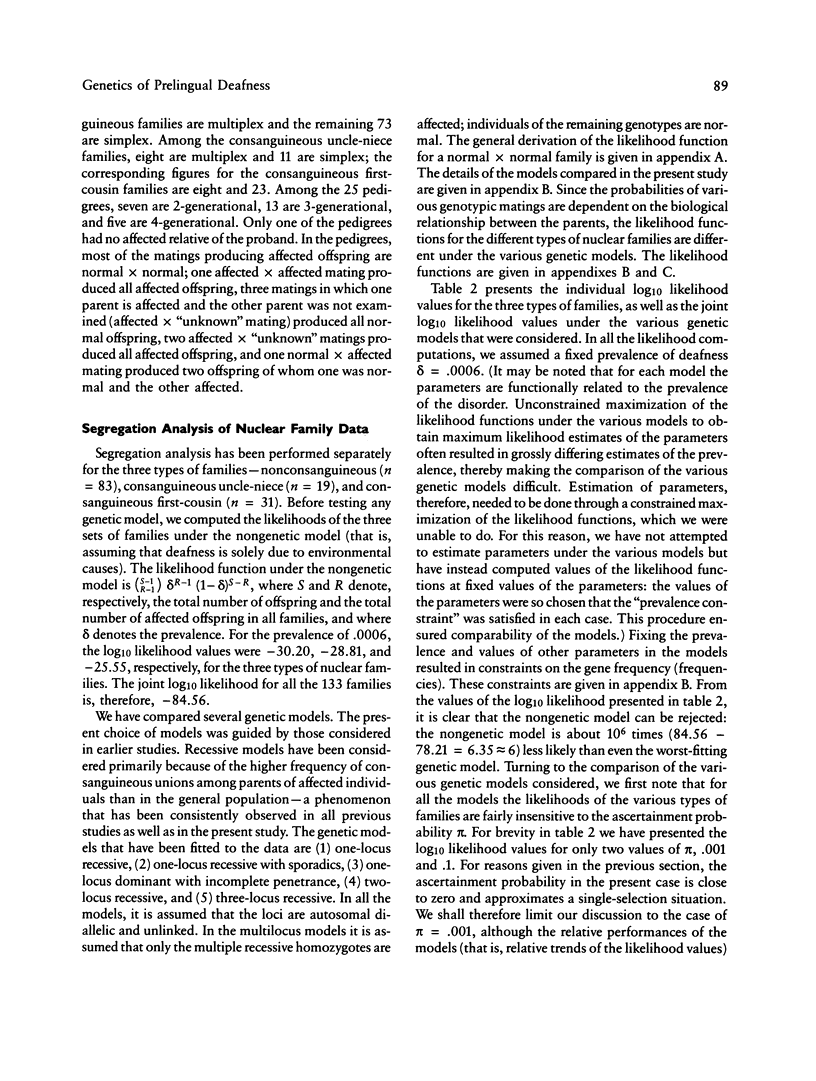
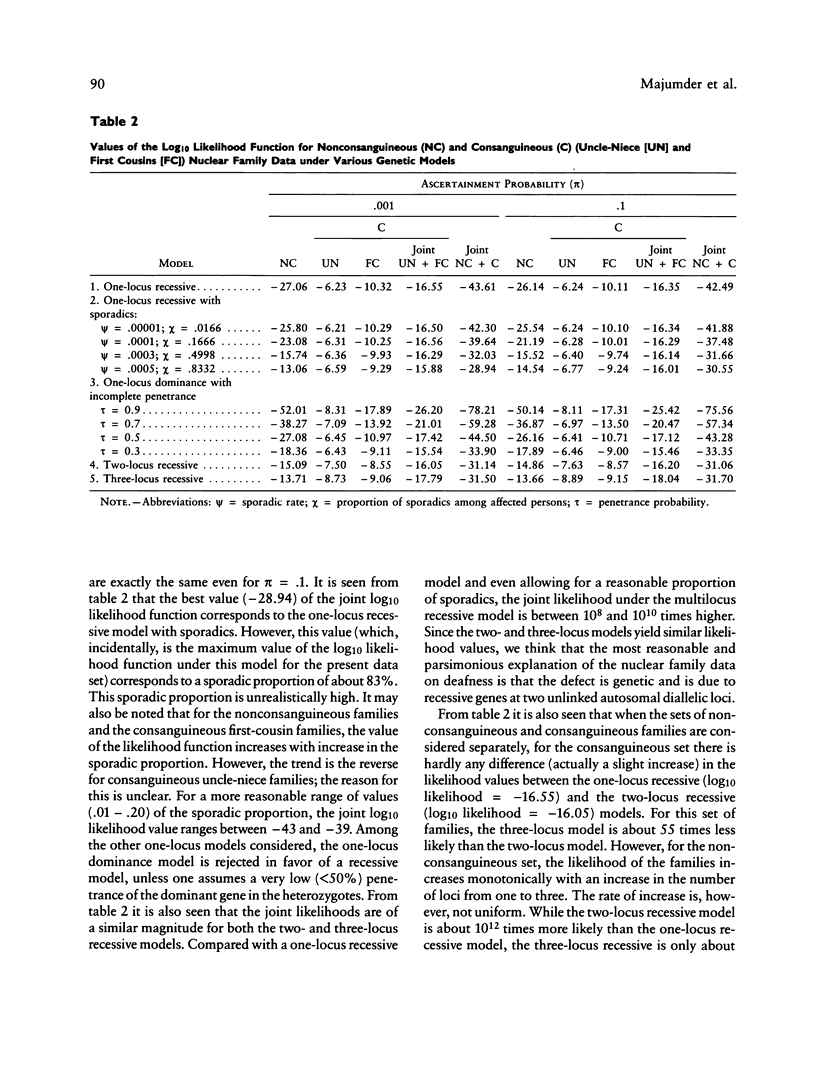
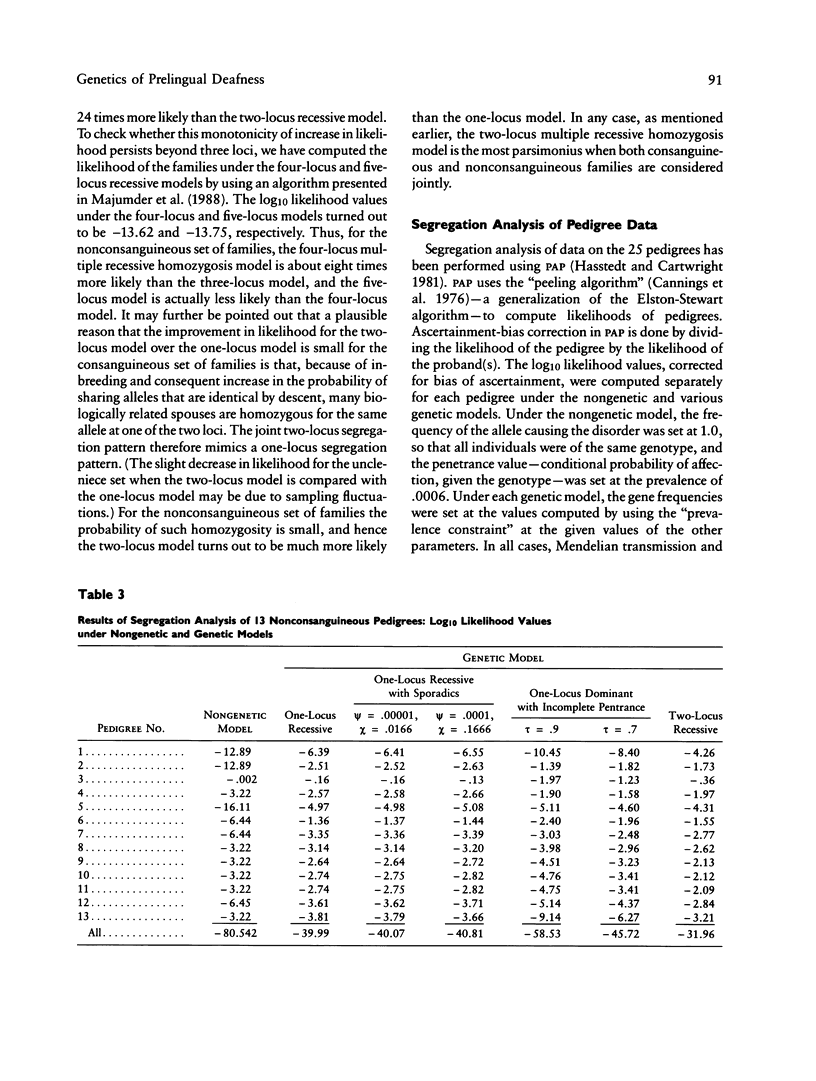
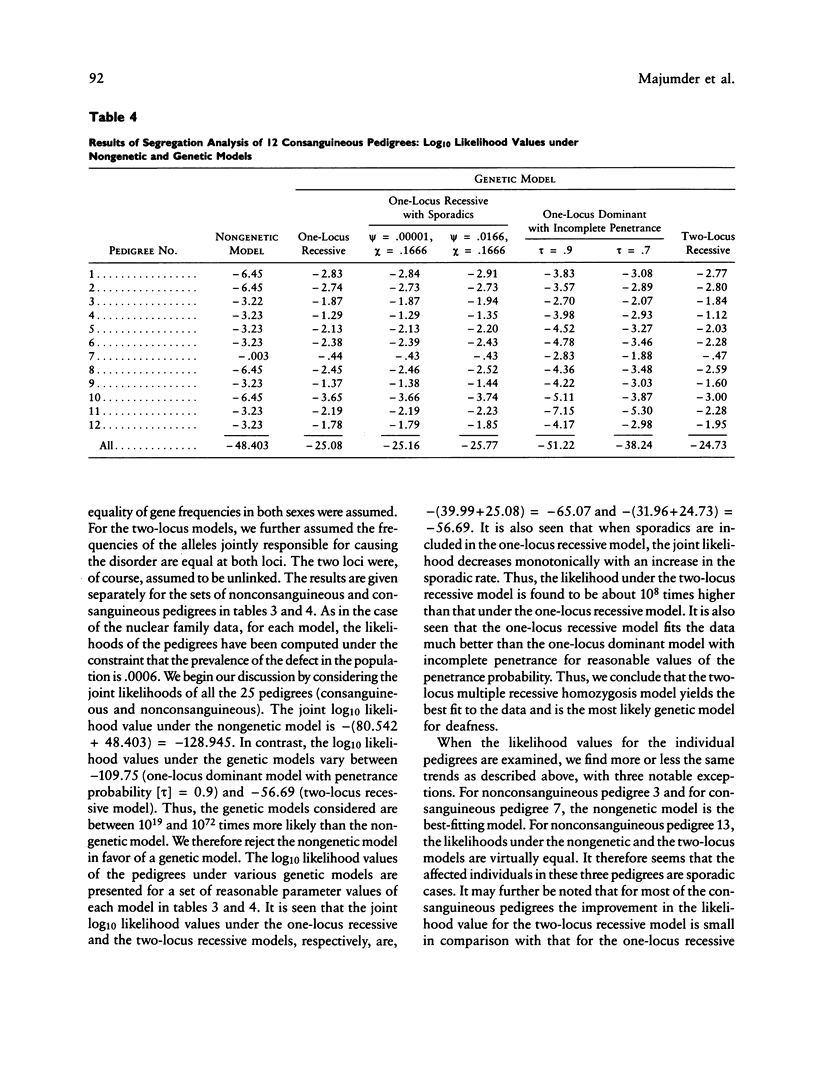
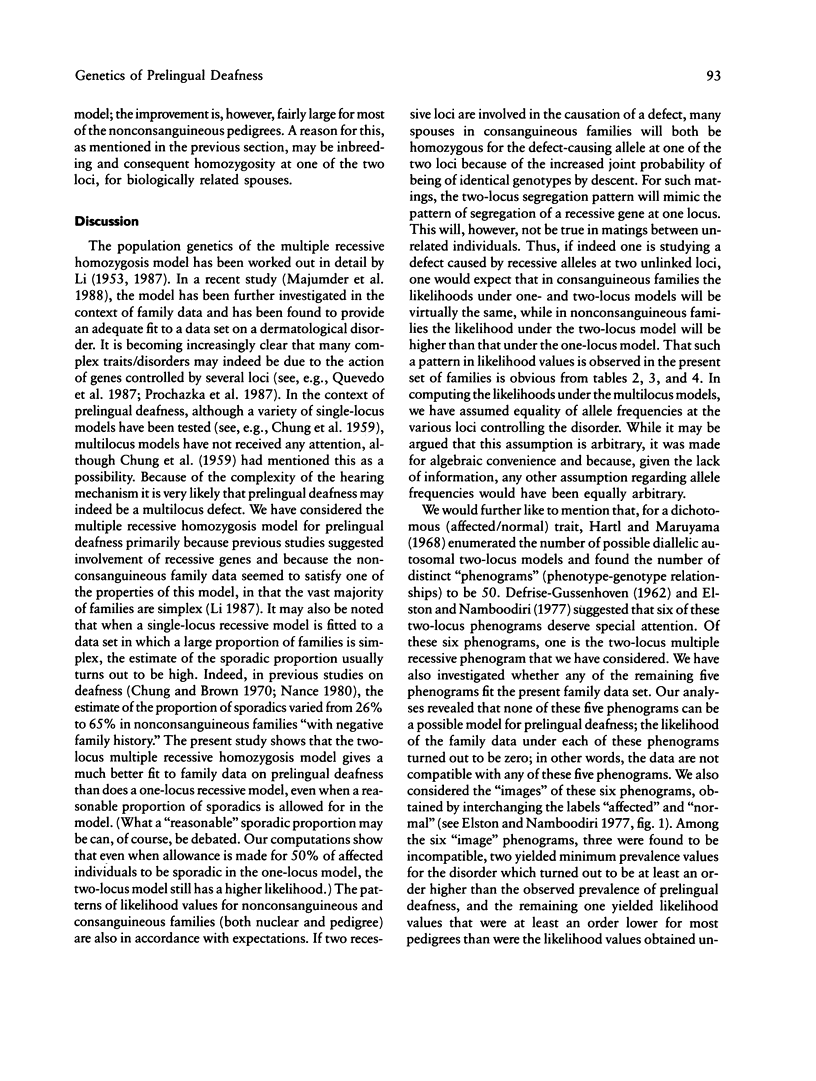
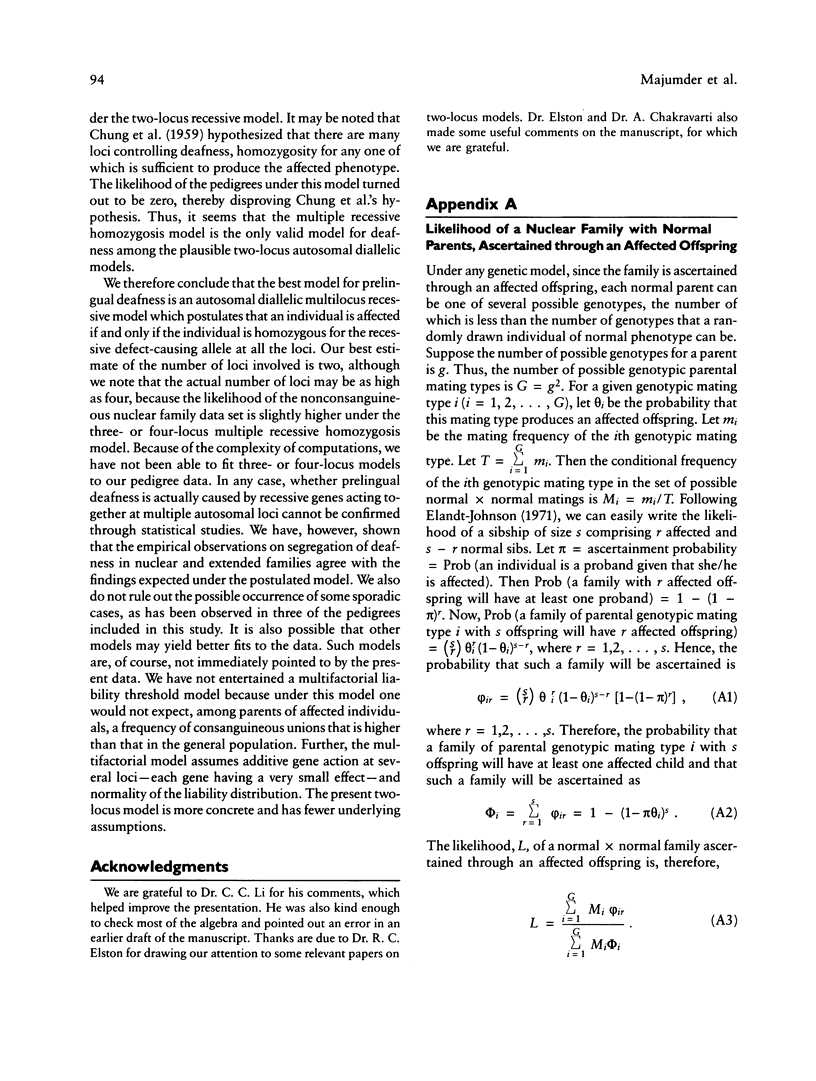
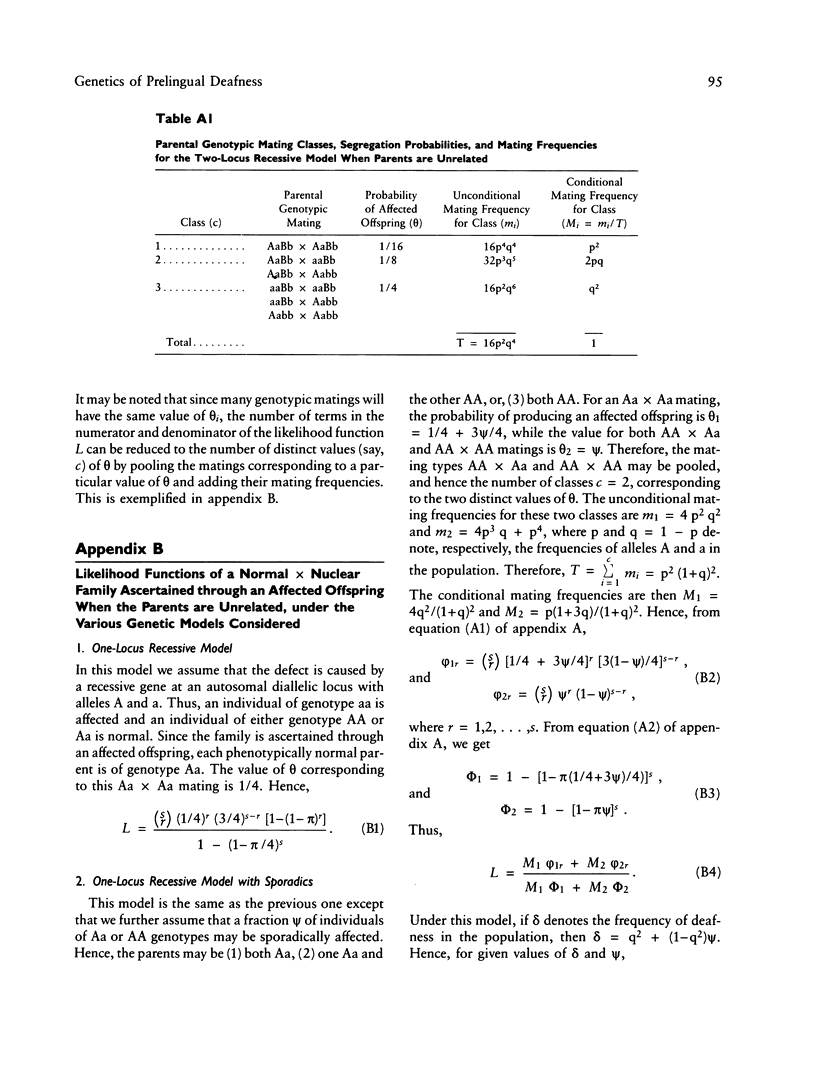
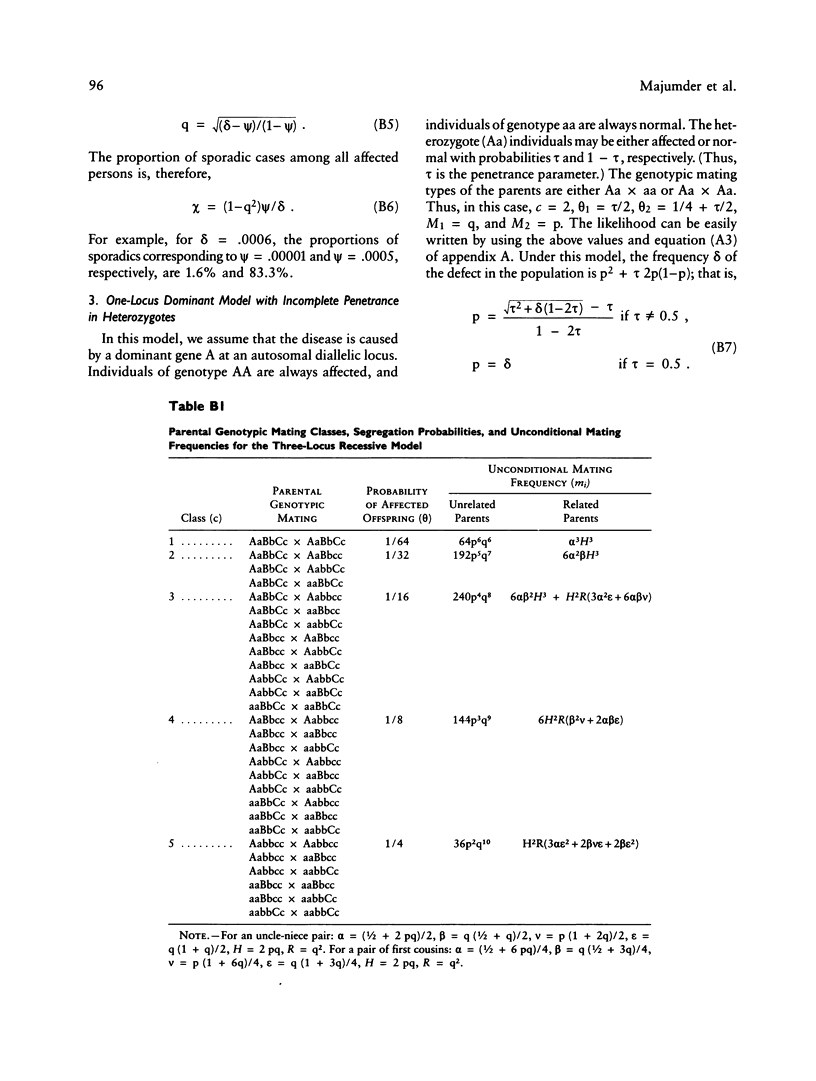
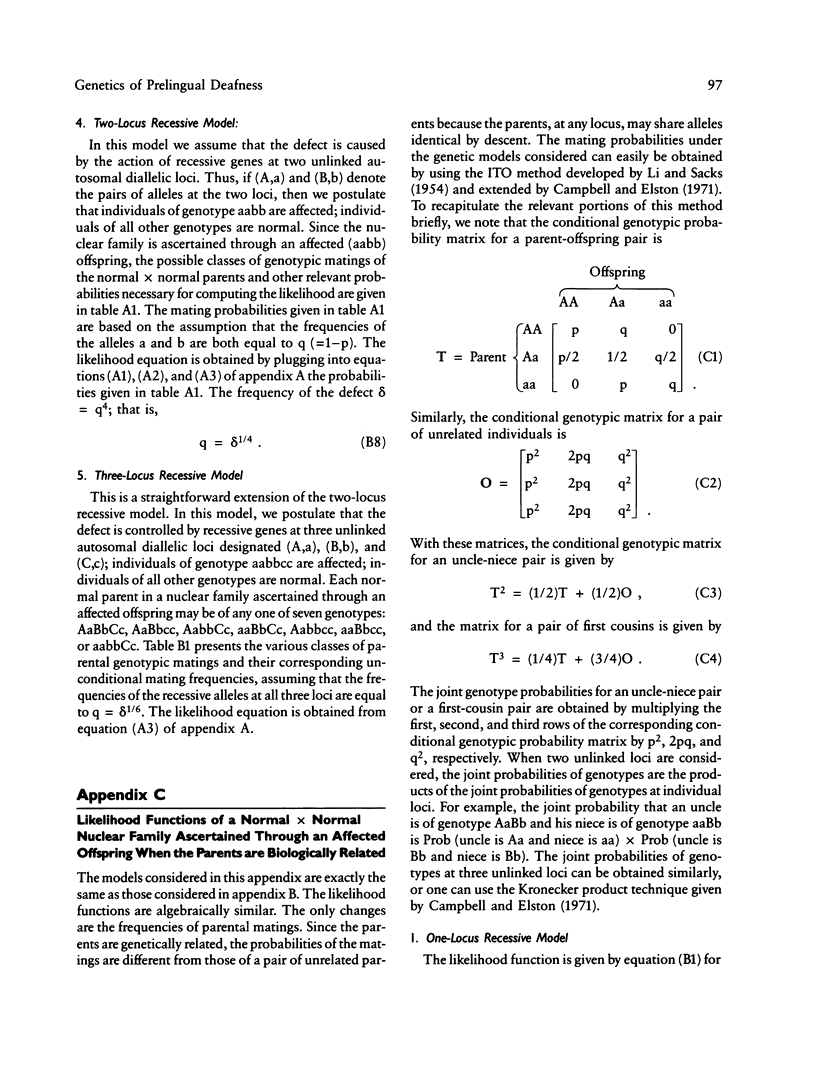
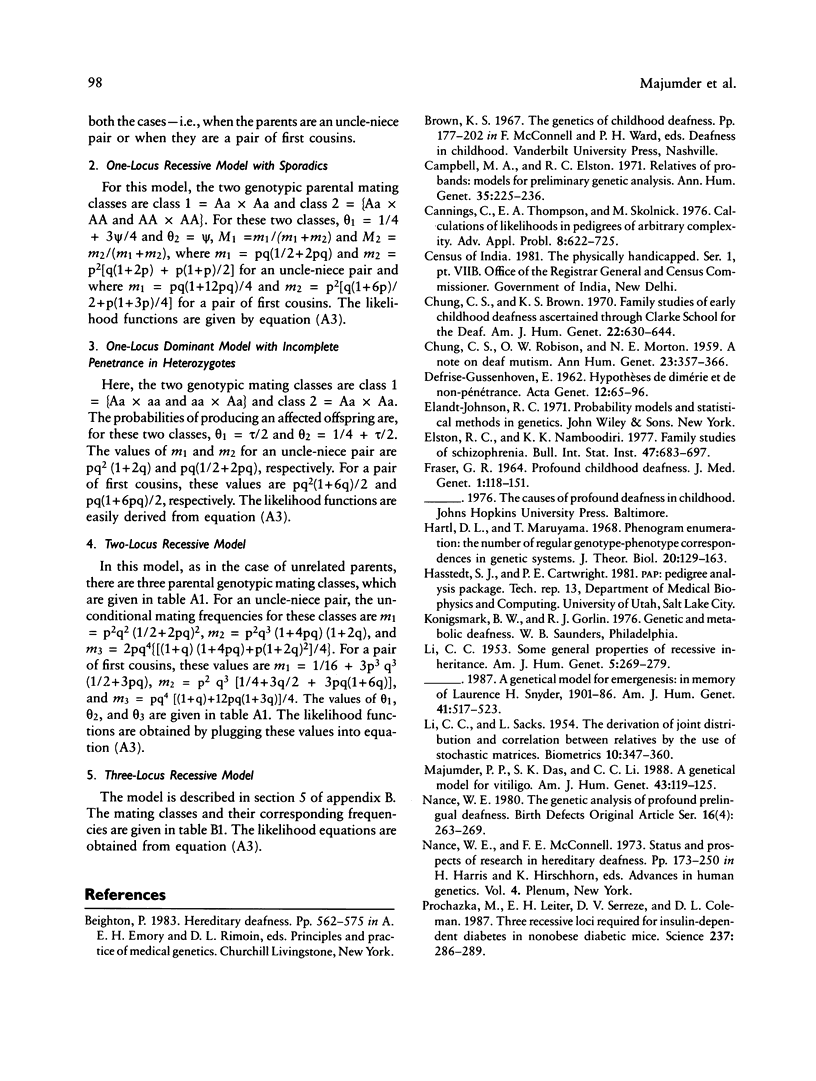
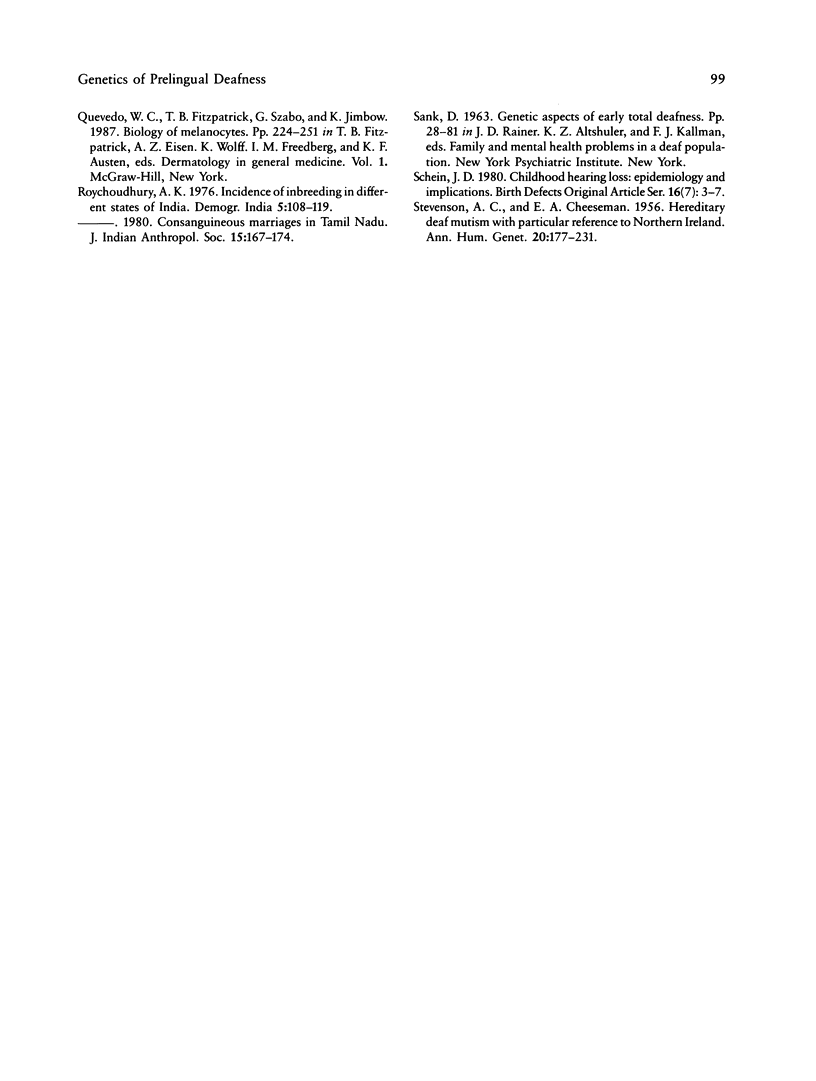
Selected References
These references are in PubMed. This may not be the complete list of references from this article.
- CHUNG C. S., ROBINSON O. W., MORTON N. E. A note on deaf mutism. Ann Hum Genet. 1959 Dec;23:357–366. doi: 10.1111/j.1469-1809.1959.tb01479.x. [DOI] [PubMed] [Google Scholar]
- Campbell M. A., Elston R. C. Relatives of probands: models for preliminary genetic analysis. Ann Hum Genet. 1971 Oct;35(2):225–236. doi: 10.1111/j.1469-1809.1956.tb01395.x. [DOI] [PubMed] [Google Scholar]
- Chung C. S., Brown K. S. Family studies of early childhood deafness ascertained through the Clarke School for the Deaf. Am J Hum Genet. 1970 Nov;22(6):630–644. [PMC free article] [PubMed] [Google Scholar]
- DEFRISE-GUSSENHOVEN E. [Hypotheses concerning dimerism and non-penetrance]. Acta Genet Stat Med. 1962;12:65–96. [PubMed] [Google Scholar]
- FRASER G. R. PROFOUND CHILDHOOD DEAFNESS. J Med Genet. 1964 Dec;1(2):118–151. doi: 10.1136/jmg.1.2.118. [DOI] [PMC free article] [PubMed] [Google Scholar]
- Hartl D. L., Maruyama T. Phenogram enumeration: the number of regular genotype-phenotype correspondences in genetic systems. J Theor Biol. 1968 Aug;20(2):129–163. doi: 10.1016/0022-5193(68)90186-0. [DOI] [PubMed] [Google Scholar]
- LI C. C. Some general properties of recessive inheritance. Am J Hum Genet. 1953 Sep;5(3):269–279. [PMC free article] [PubMed] [Google Scholar]
- Majumder P. P., Das S. K., Li C. C. A genetical model for vitiligo. Am J Hum Genet. 1988 Aug;43(2):119–125. [PMC free article] [PubMed] [Google Scholar]
- Nance W. E., McConnell F. E. Status and prospects of research in hereditary deafness. Adv Hum Genet. 1973;4:173–250. doi: 10.1007/978-1-4615-8261-8_3. [DOI] [PubMed] [Google Scholar]
- Nance W. E. The genetic analysis of profound prelingual deafness. Birth Defects Orig Artic Ser. 1980;16(4):263–269. [PubMed] [Google Scholar]
- Prochazka M., Leiter E. H., Serreze D. V., Coleman D. L. Three recessive loci required for insulin-dependent diabetes in nonobese diabetic mice. Science. 1987 Jul 17;237(4812):286–289. doi: 10.1126/science.2885918. [DOI] [PubMed] [Google Scholar]
- STEVENSON A. C., CHEESEMAN E. A. Hereditary deaf mutism, with particular reference to Northern Ireland. Ann Hum Genet. 1956 Feb;20(3):177–231. doi: 10.1111/j.1469-1809.1956.tb01367.x. [DOI] [PubMed] [Google Scholar]
- Schein J. D. Childhood hearing loss: epidemiology and implications. Birth Defects Orig Artic Ser. 1980;16(7):3–7. [PubMed] [Google Scholar]


